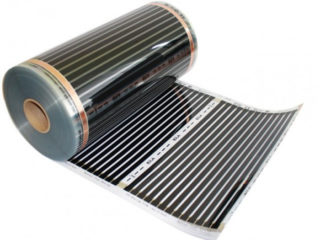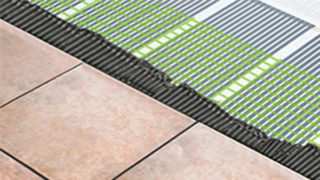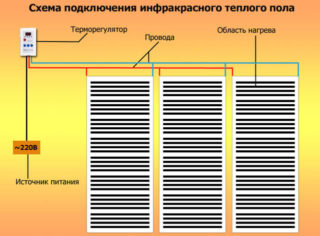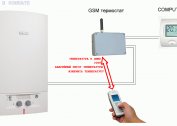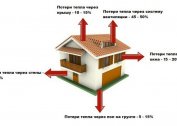The concept of electric floor heating includes several designs. Efficiency and energy consumption are different. A carbon fiber heated floor heats the surface more evenly and consumes less energy.
Description of carbon fiber underfloor heating
The basis of the electrical system is a heating cable. When turned on, an electric current heats the wire, it transfers heat to the floor surface, and the latter gives it to the air in the room. This option has 2 drawbacks. The cable resistance practically does not change with increasing temperature, so it is impossible to adjust the degree of heating along the cable length. More importantly, heat transfer occurs in 2 stages, which increases the consumption of electricity.
The first problem is partially solved by laying the cable with loops at regular intervals. This is not entirely convenient, since only modules of a certain size are received. During installation, they have to be docked with each other. The second task does not solve the standard modification.
The carbon fiber underfloor design is devoid of these disadvantages:
- The basis of the floor heater is carbon rods. Carbon is an amorphous carbon, it has a high electrical resistance - when electric current passes, it heats up very much and emits thermal radiation in the range of 5–20 μm. Infrared radiation transfers heat to objects and objects, and not to air - such a system heats the floor, furniture and people in the room, and the air is heated secondarily. To increase the efficiency of the heater, elements of graphite and silver are included.
- Carbon rods are assembled in blocks and interconnected by multicore copper cables in polymer insulation. The area of this design is practically unlimited.
- The role of temperature controllers is played by polymer inserts. When the air temperature reaches a threshold value - from +18 to +22 C, the material increases in volume, which leads to an increase in electrical resistance. In this case, the current decreases, and the temperature of the heating rod decreases.
Carbon heaters generate thermal radiation. At the same time, the air heats slightly and retains natural humidity.
The main types of graphite floor heating
2 main types of heater are produced: film and rod. They also include a bimetallic and amorphous floor. However, these 2 options do not include carbon elements. Although the principle of operation is the same: the emission of infrared heat.
Core mats
The core heat-insulated floor is a wire mat with a width of 83 cm, the number of rods in 1 running meter is 10. The structure is laid out on a prepared foundation of any area. Sections are joined together by connecting sets.
The core mats are laid under any, the most capricious material: tile, laminate, wooden flooring, parquet. Prerequisite: the heater is placed in a layer of concrete screed or tile adhesive. The rough floor is thermally insulated.
Plus products - the possibility of self-regulation. The core carbon-fiber floor is not afraid of pressure, as its design eliminates overheating of the wire. If the site is temporarily covered by furniture, heat transfer on it is reduced. At the same time, the rods reduce energy consumption and cool down. In areas where the surface cools faster, the elements heat up more.
The level of electricity consumption determines the heating temperature - from 110 to 180 watts per meter.
Film Mats
Product design is significantly different. The basis of the heating element is still carbon or a mixture of carbon and graphite. The composition is sprayed onto a base of heat-resistant polypropylene, forming conductive paths. The base is closed on both sides with a two- or three-layer film and sealed. The material withstands heating up to 120 C, is not afraid of water or moisture. The width of the strip is 50–100 cm. They are interconnected by copper buses.
There are several methods for applying carbon fiber:
- Continuous film - carbon fiber is applied over the entire area of the substrate. The heating rate of the heater is as high as possible, energy consumption is lower. If any areas are damaged, the system performance does not change.
- Perforated - in a continuous coating, stripes and circles are formed, where there are no heating elements. The modification is designed for screeding or under tiles.
- Perforation in the form of bee honeycombs is a variation of the previous one.
- Striped - a classic version in which stripes of different widths are formed on a substrate. The power of the IR film depends on their size.
Installation of IR film is extremely simple and convenient. It is very thin - 0.23-0.47 mm, it is laid without screed. The film can be cut into pieces of any size and heat the smallest areas and even stairs. If any of the sections fails, the rest of the floor continues to work in the previous mode, and the damaged fragment can be replaced at any moment.
However, the film version has many limitations. It can not be laid under porcelain tiles, tiles, because the "wet work" and the IR film are incompatible. The exception is perforated modification. But its use is, rather, a forced decision. Flooring made of materials that do not conduct heat well, such as carpet, felt-based linoleum, is not suitable. In this case, the heat absorbs the coating.
Film floor heating can be dismantled, transported to another place and reinstalled in another room.
Advantages and disadvantages
General advantages of a core mat and IR film:
- Efficiency close to 100 is not an exaggeration. Carbon generates infrared radiation. It heats the floor, objects and people, not air. The disappearance of the intermediate stage of heat transfer makes the carbon floor much more efficient.
- Systems do not generate electromagnetic radiation.
- The temperature of air heating during operation of the IR heater is low. It remains moist, and the microclimate in the room is pleasant.
- The film and the core mat are very light. They do not create a load on the floor, does not require equipment for laying.
- Both systems are fireproof. However, at temperatures above 120 ° C, the polymer parts melt.
- Not afraid of water, moisture, condensate, steam. Carbon flooring is laid for heating bathrooms, kitchens, saunas.
- The heating area is not limited: from the staircase to the hall of 100 sq.m.
- If the material is damaged in one area, the performance of the heater in other places does not change. Repairs are carried out at any time.
There is a common drawback: the high cost of operation.
Each modification has its own advantages and disadvantages due to the design. The core carbon floor is placed under any coating - from parquet to porcelain stoneware. High humidity or poor insulation of the room is not a hindrance. The system self-regulates, so that overheating of elements and excessive consumption of electricity is excluded.
At the same time, core mats are laid under the screed - installation involves wet work. It will not be possible to dismantle the system and transfer to another location.
IR film is even thinner than mats, so it is placed directly under the finish. It can be dismantled, reused. IR film is more economical, consumes 30% less electricity than a standard heating cable.
The IR film is unstable to pressure, so you can’t place furniture on such a floor. It is selective with respect to the coating material: it is not recommended to lay it under a tile or porcelain tile.
Main characteristics
The characteristics of the carbon rod heat-insulated floor and film are somewhat dependent on the manufacturer. The average values are given in the table.
| Parameters | Rod | Film |
| Thickness mm | 3,5–5 | 0,23–0,47 |
| Power consumption, W / sq. m | 125-170 | 130 |
| Energy consumption per 1 square. m, W / h | 20-50 | 25–33 |
| Heating temperature, C | 60 | 33 |
| Roll length, m | 25 | 50 |
| Roll width cm | 83 | 50–100 |
Power consumption is indicated at maximum heating temperature. For IR film, this parameter varies. The power of the core mat depends on the nature of the heating elements. The inclusion of silver with graphite increases the efficiency of the system and reduces energy consumption.
Features of the installation of carbon floor heating
Laying different types of floor heater is slightly different. Mounting the core mat is more difficult. Technology must be followed exactly.
- Prepare a warm floor for laying: check the integrity of the rods, heat-laying tubes, wires. The laying area is calculated. Core mats can be mounted under furniture, but if it is a stationary sliding wardrobe or a piano, doing so is unreasonable, since this area does not need heating.
- The base surface is cleaned and leveled.
- Stack heat-reflecting material. It is better to choose an insulator with a melting point of at least 100 C - an isolon, for example. The heat reflector reduces the consumption of electricity for heating by 30–40%, so you can not neglect it. Lay the material over the entire area of the room or just under the carbon floor.
- The operation of the heater depends on the temperature sensor. Install the device as close to the floor as possible, then its data reflect the actual heating temperature.
- The canvas is cut into modules of the required size. The cut is on the connecting wire. When laying, the modules are connected in series or in parallel, depending on the installation scheme. The rods should not intersect. Mats are fixed with tape or dowel-fingerboard.
- Install the thermostat, connect to a warm floor and to the network. Use the circuit given in the instructions. If the heater power exceeds 2 kW, it is connected via an automatic machine.
- Check the performance of the floor. Only after that put a screed 2-3 cm thick.
Concrete hardens in 28 days, before you can not turn on a warm floor.
Main manufacturers
The manufacturers rating in 2019 is led by the following companies:
- Unimat Boos introduces mats with a minimum spacing between the rods.
K-Techologies is a trademark of GTMat, RHE (Russia). - GT is a South Korean company that manufactures high-performance core carbon flooring.
- Devi is a Danish company. Offers all types of film floors.
- CalorIQue LLC is an American brand known for high safety standards.
When choosing a floor heater from any company, you need to evaluate its characteristics. Power and system design are more important than brand.


